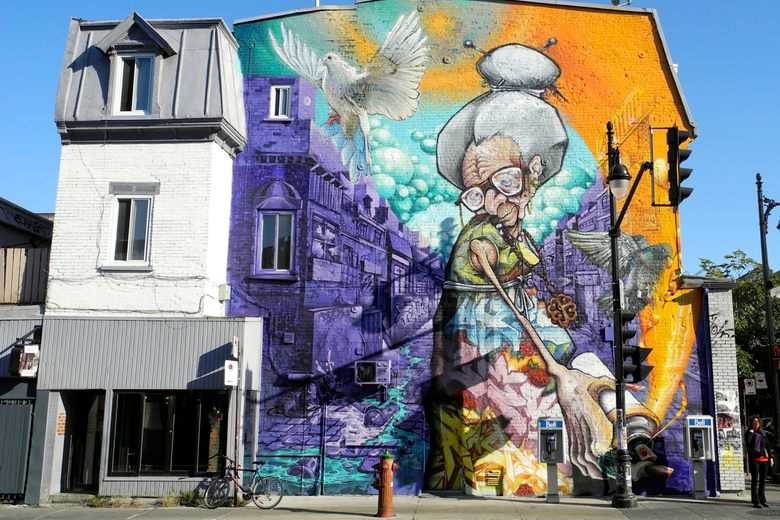
The vibrant city of Montreal is known for its rich cultural heritage and thriving arts scene. One aspect of the city’s artistic landscape that has gained significant attention in recent years is its street art. With its bold colors, intricate designs, and thought-provoking messages, Montreal’s street art scene is a celebration of both urban culture and contemporary art.
Walking through the streets of Montreal, it is impossible not to be captivated by the graffiti murals that adorn the city’s buildings. From towering, larger-than-life pieces to small, hidden gems, the art seems to be everywhere, turning the city into an open-air gallery. Each piece tells a story, reflecting the diverse narratives and experiences of the artists who created them.
What sets Montreal’s street art apart is its fusion of urban culture and contemporary artistic techniques. Many of the city’s street artists incorporate elements of hip hop, skateboarding, and other urban subcultures into their work, creating a unique aesthetic that is both visually striking and culturally relevant. This blending of genres and styles allows for a more inclusive and accessible form of art that resonates with a wide range of audiences.
In addition to celebrating urban culture, Montreal’s street art scene also embraces contemporary art practices. Many of the city’s street artists have backgrounds in fine arts and have successfully transitioned from traditional gallery spaces to the streets. This integration of street art into the larger art world has garnered recognition and respect for the medium, elevating it from an underground movement to a legitimate form of artistic expression.
Montreal’s street art is not just a visual spectacle; it is a testament to the city’s commitment to fostering creativity and embracing its cultural diversity. By providing a platform for artists to express themselves freely, Montreal has created a vibrant and inclusive arts scene that attracts both local and international talent. Whether it is a political statement, a celebration of local history, or a simple expression of beauty, Montreal’s street art serves as a powerful reminder of the transformative power of art in our society.
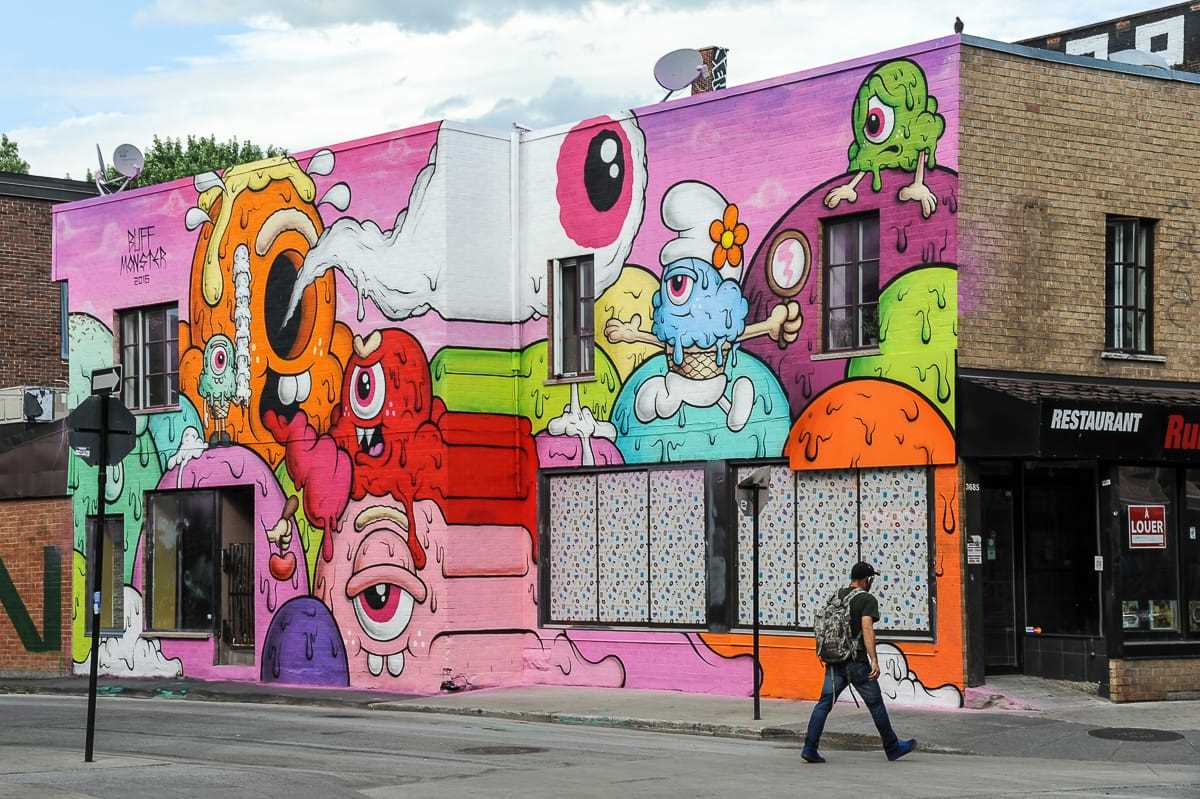
In Montreal, street art has become an integral part of the city’s cultural landscape. One of the most captivating aspects of this artistic movement is the proliferation of murals throughout the city. From small alleyways to grand boulevards, Montreal is a veritable canvas for local and international artists.
Walking through the streets of Montreal feels like exploring an open-air art gallery. In every neighborhood, you will find walls adorned with vibrant, thought-provoking murals. These large-scale artworks often convey powerful messages and reflect the diverse cultures that coexist in the city.
The city has embraced street art as a way to engage with the community and beautify urban spaces. The murals add color and life to once-plain walls, transforming them into captivating works of art. The art scene in Montreal is known for its collaborative nature, with artists often coming together to create murals that inspire and spark conversations.
Exploring the Murals
If you’re interested in discovering Montreal’s street art, you won’t have to look far. The city is teeming with impressive murals that are waiting to be admired. There are guided tours available that take you through different neighborhoods, allowing you to learn about the artists and their inspirations.
You can also explore the murals on your own, taking the time to wander through the city’s various streets and alleys. From the iconic murals in the Plateau-Mont-Royal neighborhood to the hidden gems in Griffintown, there is always something new to discover.
Murals as a Catalyst for Change
The mural movement in Montreal goes beyond aesthetics; it also serves as a catalyst for social change. Many artists use their murals to raise awareness about social and political issues, shedding light on topics such as diversity, environmental sustainability, and indigenous rights.
These thought-provoking artworks spark conversations and encourage dialogue among residents and visitors alike. They serve as a reminder of the power of art to create change and inspire social action.
Montreal’s vibrant street art scene and the abundance of murals have made the city a global hub for urban art. Whether you’re an art enthusiast or simply enjoy exploring unique and hidden corners of a city, Montreal’s murals are sure to captivate and inspire you.
The Rise of Street Art
Street art has seen a significant rise in popularity and recognition over the years. What was once considered vandalism and illicit activity is now celebrated as a legitimate form of artistic expression.
The origins of street art can be traced back to the graffiti and mural movements of the 1960s and 1970s, when artists began using public spaces as their canvas. These early pioneers laid the groundwork for what would become a global phenomenon.
| One of the driving forces behind the rise of street art is its ability to reach a wide audience. Unlike traditional art forms that are confined to galleries and museums, street art is accessible to anyone who walks by. It democratizes art and brings it directly to the streets, where people live and work. | Another factor contributing to the rise of street art is its connection to urban culture. Street art has its roots in the streets and neighborhoods of cities, making it inherently tied to the urban experience. It reflects the attitudes, values, and struggles of urban communities, providing a powerful platform for artists to communicate their messages. |
The rise of the internet and social media has also played a significant role in the popularity of street art. Artists can now share their work with a global audience instantly, and street art has become a popular subject on platforms like Instagram and Pinterest. This online exposure has helped elevate street art to new heights and has enabled artists to gain recognition and exposure that was previously unimaginable.
Montreal’s Unique Artistic Identity
Montreal’s street art scene is a reflection of the city’s unique artistic identity. With its diverse mix of cultures and vibrant creative community, Montreal has become a hub for urban art and contemporary expression.
Cultural Fusion
One of the key elements that sets Montreal’s street art apart is its fusion of different cultural influences. From the colorful murals of the Plateau neighborhood to the stencil art in the Mile End district, the city’s art scene reflects its multicultural heritage. Artists draw inspiration from a variety of sources, including European graffiti, Indigenous art, and urban hip-hop culture.
Urban Landscape as Canvas
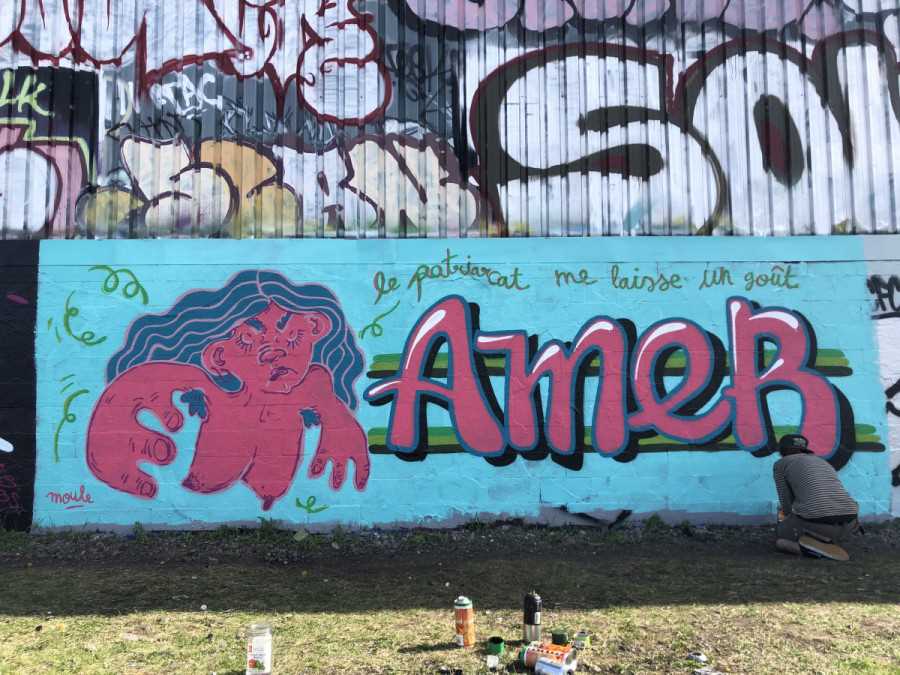
Montreal’s unique architectural landscape provides an ideal canvas for street artists. From the historic buildings of Old Montreal to the modern skyscrapers of downtown, every corner of the city offers a unique space for artistic expression. Artists often transform neglected and overlooked areas into vibrant works of art, breathing new life into the urban landscape.
Montreal’s city officials have recognized the importance of urban art in enhancing the city’s cultural identity. They have designated certain areas as legal spaces for street art, providing artists with opportunities to create large-scale murals and graffiti legally. This has helped to foster a thriving street art scene and has made Montreal a destination for artists and art enthusiasts alike.
Furthermore, Montreal’s many festivals, such as the Mural Festival and the Under Pressure Urban Arts Festival, celebrate and showcase street art. These events attract local and international talent, further cementing Montreal’s reputation as a city that embraces urban culture and contemporary art.
A Platform for Social Commentary
Street art has long been used as a platform for social and political commentary, and Montreal’s artists are no exception. Many murals in the city address current social issues, such as inequality, climate change, and indigenous rights. These thought-provoking artworks not only beautify the city but also serve as a reminder of the challenges and aspirations of its residents.
Exploring the Streets of Montreal
If you find yourself in Montreal, be sure to take some time to explore the vibrant and dynamic street art scene. The city’s walls are adorned with a rich tapestry of murals, graffiti, and installations that reflect the urban culture and contemporary art of this cosmopolitan city.
Artistic Expressions Everywhere
As you wander through the streets of Montreal, you’ll notice that art is everywhere. From towering murals on the sides of buildings to small, hidden pieces tucked away in alleyways, there is no shortage of artistic expressions to discover.
Montreal’s street art scene is known for its diversity and variety of styles. Talented artists from all over the world leave their mark on the city, creating an ever-changing canvas that captivates both locals and visitors alike.
Exploring the Neighborhoods
To fully experience Montreal’s street art, it’s worth exploring the different neighborhoods that showcase this vibrant scene. The borough of Saint-Laurent, for example, is home to the famous MURAL Festival, which brings together local and international artists to create stunning murals along its main streets.
The Plateau-Mont-Royal neighborhood is another hotspot for street art in Montreal. Its colorful and eclectic streets are a canvas for a wide range of styles, from abstract and surreal to bold and political. Walking around the Plateau-Mont-Royal is like visiting an open-air art gallery.
Be sure to also check out the Mile End neighborhood, known for its bohemian atmosphere and artistic spirit. Here, you’ll find murals, graffiti, and other art installations that reflect the neighborhood’s multicultural heritage.
A Cultural Journey
Exploring the streets of Montreal is not just about admiring the art, but also about immersing yourself in the city’s culture and history. The street art in Montreal often tells stories of the city’s past, present, and future, offering a glimpse into the diverse voices and perspectives that make up this vibrant metropolis.
Whether you’re a street art enthusiast or simply curious about urban culture and contemporary art, Montreal’s streets offer a unique and captivating experience. Take the time to wander through the city, and you’ll be rewarded with a rich tapestry of artistic expressions that celebrate the spirit of this dynamic city.
Influence of Street Art on Urban Culture
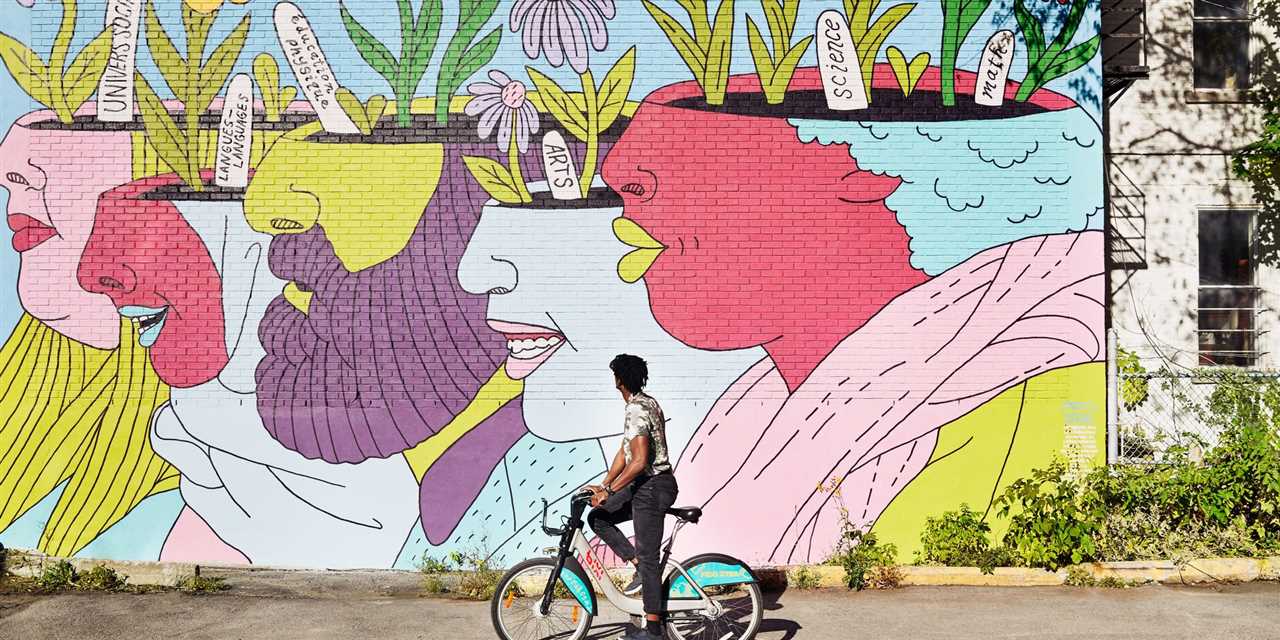
Street art has become an integral part of urban culture, transforming the way we experience and interact with cities. The influence of street art can be seen in various aspects of urban life, from public spaces and architecture to fashion and social activism. Here are some key ways in which street art has shaped urban culture:
- Rejuvenating Public Spaces: Graffiti and murals have the power to transform bland and lifeless public spaces into vibrant and visually appealing areas. Street art makes cities more inviting and provides a sense of identity and belonging for the communities residing in them.
- Breaking Stereotypes: Street art challenges societal norms and stereotypes by giving a voice to marginalized communities and addressing social issues. It serves as a powerful medium for self-expression, allowing artists to convey their messages and provoke thought among viewers.
- Bridging Divides: Street art has the ability to bridge divides within cities by creating shared spaces that foster unity and inclusivity. It brings people together from different backgrounds and encourages dialogue and understanding.
- Inspiring Creativity: Street art inspires creativity in urban dwellers, encouraging them to think outside the box and embrace artistic expression. It sparks the imagination of individuals and encourages them to view their surroundings with a fresh perspective.
- Influencing Fashion and Design: Street art has had a significant influence on fashion and design trends, with graffiti-inspired clothing and accessories becoming popular. The bold and vibrant aesthetics of street art have also made their way into interior design, with graffiti-style murals and artwork being incorporated into contemporary spaces.
Overall, street art has had a profound impact on urban culture, transforming cities into vibrant and dynamic spaces that celebrate creativity and diversity. It has encouraged communities to engage with their surroundings, fostering a sense of pride and ownership. Street art continues to inspire and challenge traditional notions of art, leaving a lasting imprint on the urban landscape.
Celebrating Diversity through Street Art
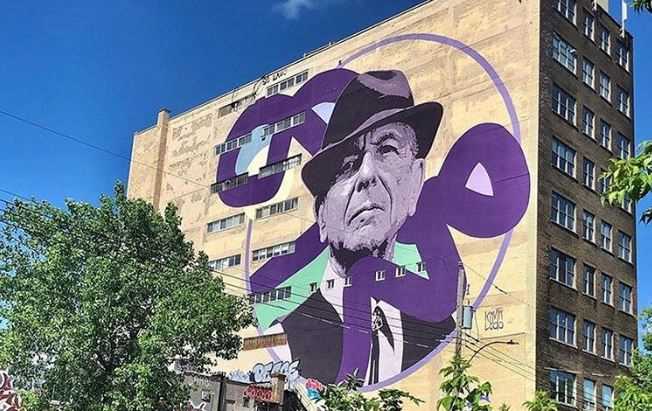
Montreal’s vibrant street art scene provides an ideal platform for celebrating the city’s diversity. Through various murals and graffiti, local artists embrace urban culture and showcase the rich tapestry of Montreal’s multicultural identity.
One of the key themes in Montreal’s street art is the celebration of different ethnicities and cultures within the city. Artists use their artwork to pay homage to the various communities that call Montreal their home. From vibrant murals depicting traditional clothing and customs to graffiti showcasing famous figures from different cultures, street art serves as a visual reminder of the city’s multiculturalism.
Street art also plays a role in fostering a sense of unity and belonging among Montreal’s residents. By highlighting the diversity that exists within the city, artists create a shared experience that can be enjoyed by people from all walks of life. The public nature of street art allows everyone to participate in and appreciate the cultural mosaic that defines Montreal.
Furthermore, street art provides a platform for marginalized groups to express their identity and reclaim public spaces. Artists from underrepresented communities use their artwork to challenge stereotypes and spark conversations about social issues such as racism, gender inequality, and LGBTQ+ rights. Through their bold and thought-provoking pieces, they amplify their voices and contribute to the ongoing dialogue surrounding diversity and inclusion.
The Evolution of Street Art in Montreal
In the 1980s and 1990s, Montreal’s street art scene was heavily influenced by the graffiti movement that was sweeping cities around the world. These early works were often considered illegal and were created under the cover of darkness. Artists used spray paint and markers to leave their mark on the city’s walls and buildings, expressing their personal styles and messages.
As the years went by, Montreal’s street art began to evolve and gain recognition as a legitimate form of art. Artists started to collaborate with local businesses and organizations to create large-scale murals that added color and vibrancy to the city’s neighborhoods. These murals often depicted cultural icons, political messages, and social issues, creating a visual dialogue between the artists and their audience.
Today, street art in Montreal is celebrated as an important part of the city’s cultural landscape. The city has dedicated legal walls and spaces where artists can showcase their work without fear of persecution. This has allowed the art form to flourish and attract both local and international talent.
The Role of Street Art in Montreal’s Urban Culture
Street art has become an integral part of Montreal’s urban culture, offering residents and visitors a unique and immersive artistic experience. The city’s streets and alleys have become open-air galleries, where graffiti and murals coexist with traditional art galleries and museums.
Street art in Montreal also serves as a platform for social and political commentary. Artists use their work to address issues such as gentrification, racism, and environmentalism, sparking conversations and provoking thoughts among viewers.
The Impact of Street Art on Contemporary Art
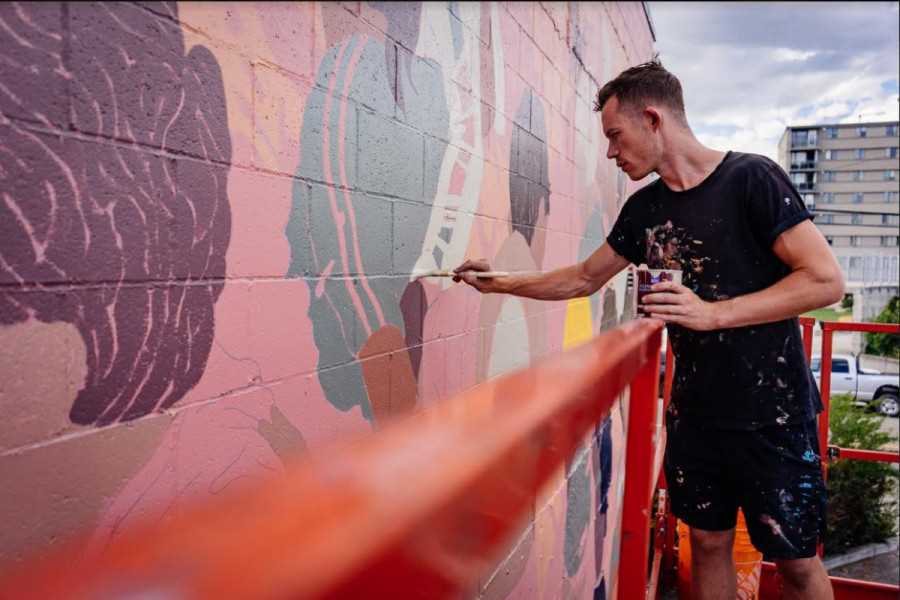
The evolution of street art in Montreal has had a profound impact on contemporary art. Artists who started in the streets have gone on to exhibit their work in galleries and museums worldwide, blurring the lines between street art and fine art.
Moreover, the accessibility and public nature of street art have made art more inclusive and accessible to a wider audience. Anyone walking down the streets of Montreal can stumble upon a powerful piece of street art, free from the constraints of traditional art spaces.
Engaging with the Community
One of the most remarkable aspects of Montreal’s street art scene is its active engagement with the community. Street artists in the city often use their art as a means of initiating conversations and sparking dialogue about various social issues.
Through their vibrant and thought-provoking creations, these artists capture the attention of passersby and encourage them to reflect on important topics such as inequality, racism, and gentrification. By placing their works in public spaces, street artists ensure that their messages reach a wide audience, transcending the boundaries of traditional art galleries and museums.
Besides addressing social concerns, Montreal’s street art also fosters a sense of community and belonging. Many local artists collaborate with neighborhood residents and business owners to bring their visions to life. These collaborations often result in stunning murals that are inspired by the local culture and heritage.
Moreover, Montreal’s annual street art festivals, such as MURAL Festival and Under Pressure, provide opportunities for artists to connect with both local and international audiences. These events feature live painting sessions, workshops, and exhibitions, allowing the community to actively participate in the creation and appreciation of street art.
Overall, Montreal’s street art scene goes beyond decorative displays. It serves as a powerful tool for engaging with the community, promoting social awareness, and fostering a sense of unity.
Preserving and Documenting Street Art
Street art is a form of expression that is often ephemeral in nature. Murals and graffiti can be easily painted over or removed, leaving the urban landscape forever changed. However, recognizing the cultural and artistic significance of street art, efforts are being made to preserve and document these works of art.
One way to preserve street art is through photography and documentation. Professional photographers and artists are capturing images of street art, creating a visual archive of these public artworks. By documenting street art, it can be preserved for future generations to appreciate and learn from. Additionally, these images help to create an online presence for street artists, allowing their work to reach a wider audience.
Archiving and Collecting Street Art

Some organizations and institutions are dedicated to archiving and collecting street art. They work with street artists to secure permission to preserve their work and may even provide them with spaces to create new artworks. These archives and collections serve as valuable resources for researchers, art historians, and enthusiasts.
Archiving street art can be a challenging task due to its transient nature. Many street art pieces are temporary and can be easily destroyed or erased. However, some organizations have found innovative solutions, such as using technology to digitally preserve street art through augmented reality or 3D scanning. These methods allow for a more immersive experience, bringing street art to life beyond its physical form.
Promoting Street Art Preservation
Preserving street art is not just the responsibility of organizations and institutions, but also the community at large. Educating the public about the importance of street art and its cultural significance can help foster a sense of appreciation and respect for these artworks.
Public art tours and exhibitions can showcase the beauty and creativity of street art, encouraging the public to value and protect these works. Furthermore, advocating for legal recognition and protection of street art can ensure its preservation and promote a vibrant urban landscape.
| Benefits of Preserving Street Art | Challenges in Preserving Street Art |
|---|---|
| 1. Cultural preservation | 1. Transient nature |
| 2. Creative expression | 2. Legal issues |
| 3. Community identity | 3. Vandalism and destruction |
Impact of Montreal Street Art on the Contemporary Art Scene
The vibrant street art scene in Montreal has had a significant impact on the contemporary art scene in the city. With its rich cultural diversity and artistic energy, Montreal has become a hub for innovative and cutting-edge street artists, who are shaping the city’s urban landscape.
1. Breaking Down Barriers
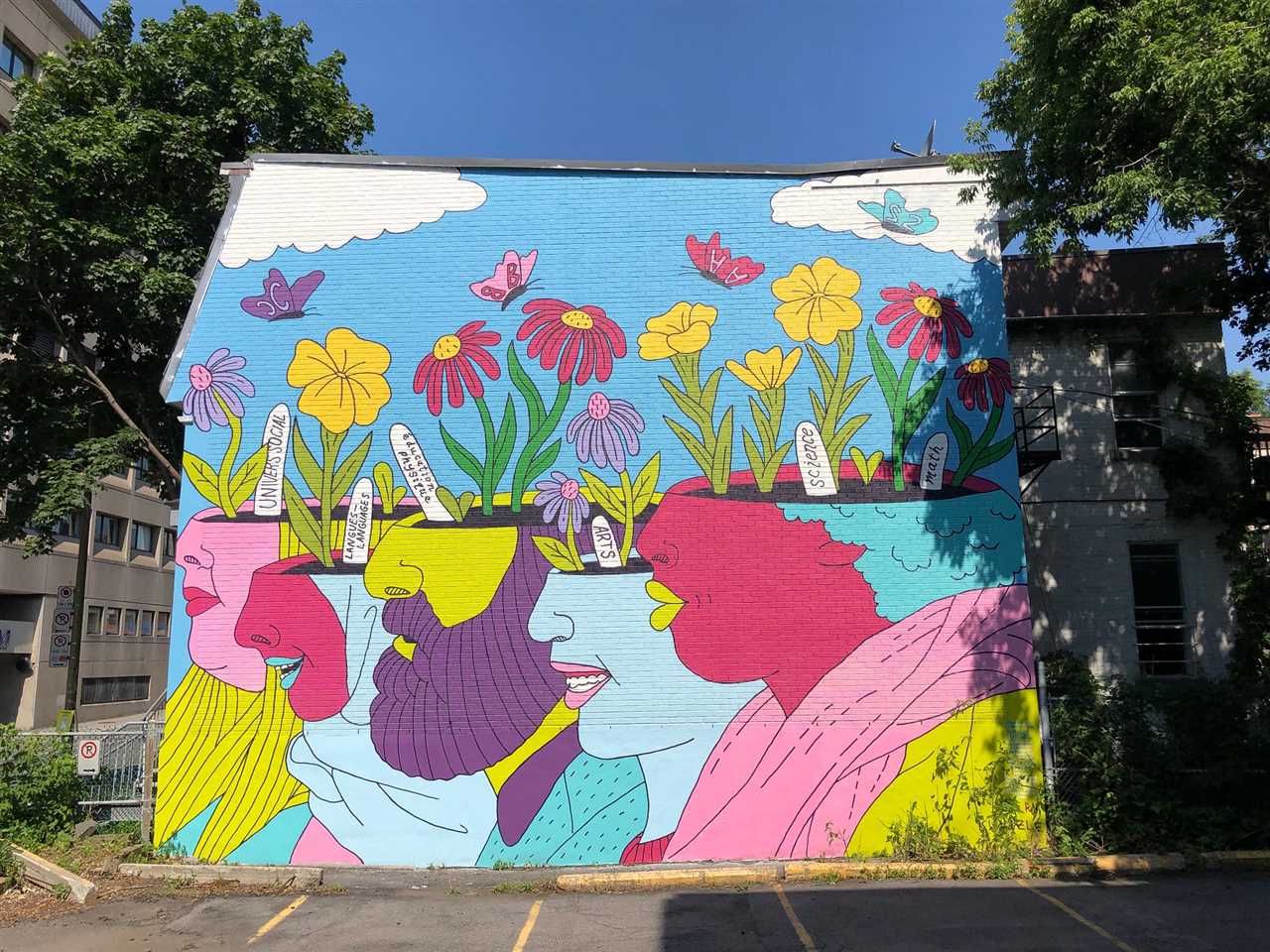
Montreal street art has played a crucial role in breaking down the barriers between traditional art forms and the urban environment. Street artists have transformed neglected and dilapidated buildings into captivating works of art, bringing color and vibrancy to the city streets. This fusion of art and the urban landscape has challenged the traditional notion of art as something confined to galleries and museums, making it accessible to everyone.
2. Collaboration and Community
Montreal’s street art scene has fostered a sense of collaboration and community among artists. Many street art projects involve multiple artists working together to create large-scale murals and installations. This collaborative spirit has not only led to the creation of breathtaking artworks, but it has also created a supportive and inclusive community of artists who share ideas and techniques. Through their art, they are able to express their unique perspectives and narratives, while also giving a voice to marginalized communities.
Furthermore, street art has also brought together members of the community, as they come together to appreciate and discuss the artworks. Public art walks and festivals have become popular in Montreal, attracting locals and tourists alike to explore and engage with the city’s street art, fostering a deeper connection between the artwork and the community.
3. Influence on Contemporary Art
The impact of Montreal street art on the contemporary art scene extends beyond the city’s borders. Many Montreal street artists have gained international recognition, showcasing their artwork in galleries and museums around the world. Their unique and innovative styles have influenced contemporary art trends, pushing boundaries and challenging conventional norms.
Moreover, the fusion of street art and contemporary art has redefined the concept of art itself. Street artists often incorporate elements of graffiti, stencil art, and illustration into their work, creating a dynamic and multi-dimensional art form. This cross-pollination of artistic styles has revitalized the contemporary art scene, infusing it with fresh ideas and perspectives.

I am a mural enthusiast and a fervent admirer of street art. Rather than creating murals myself, I am passionate about collecting them. My love for street art knows no bounds. I am dedicated to curating and cherishing these artworks that grace the streets. My collection stands as a testament to my profound appreciation for this form of artistic expression.
read about me



